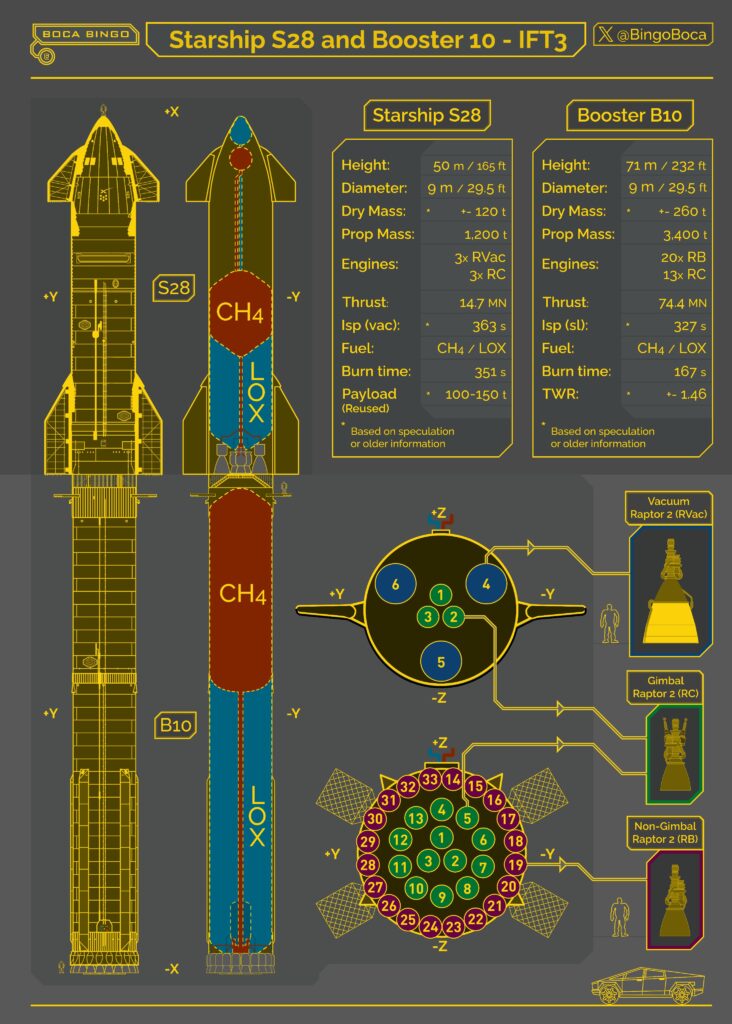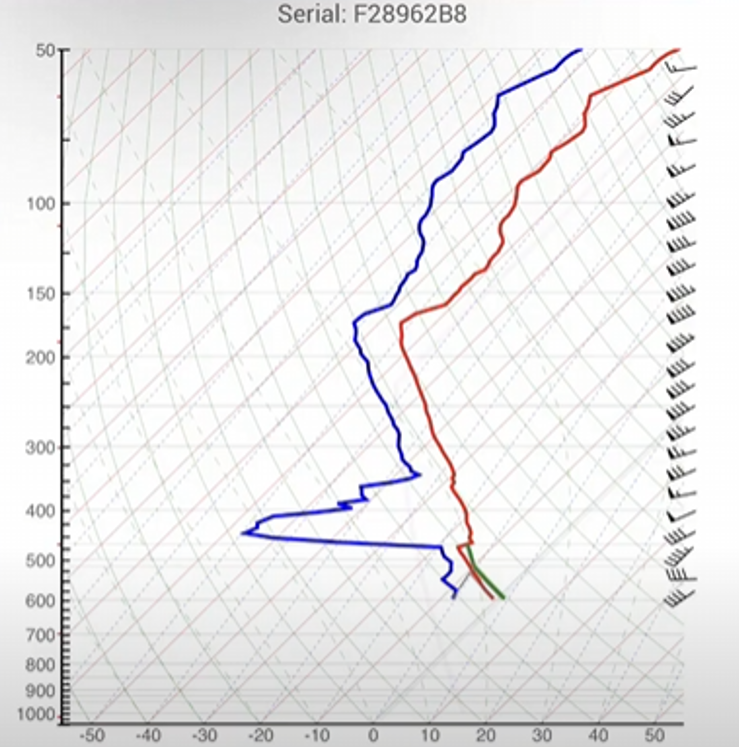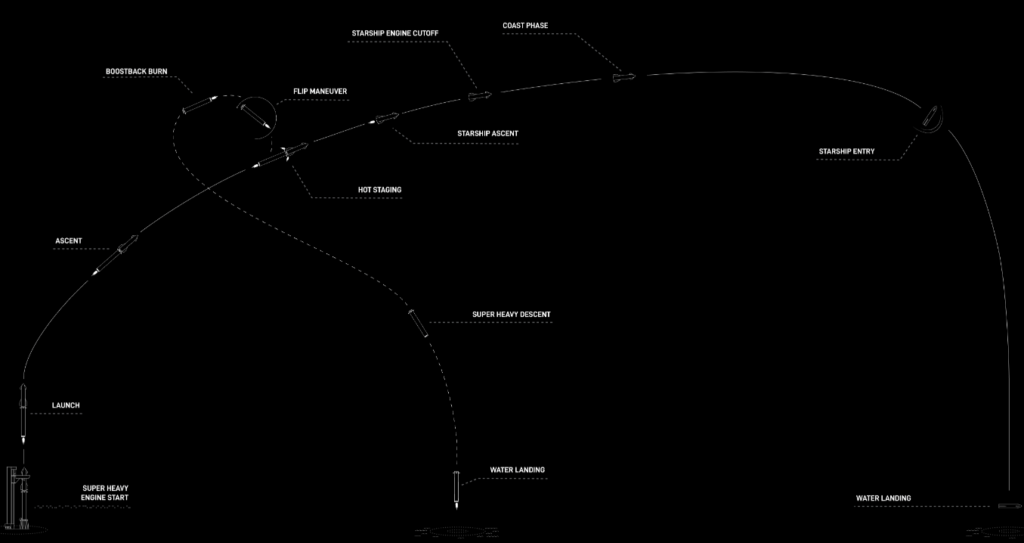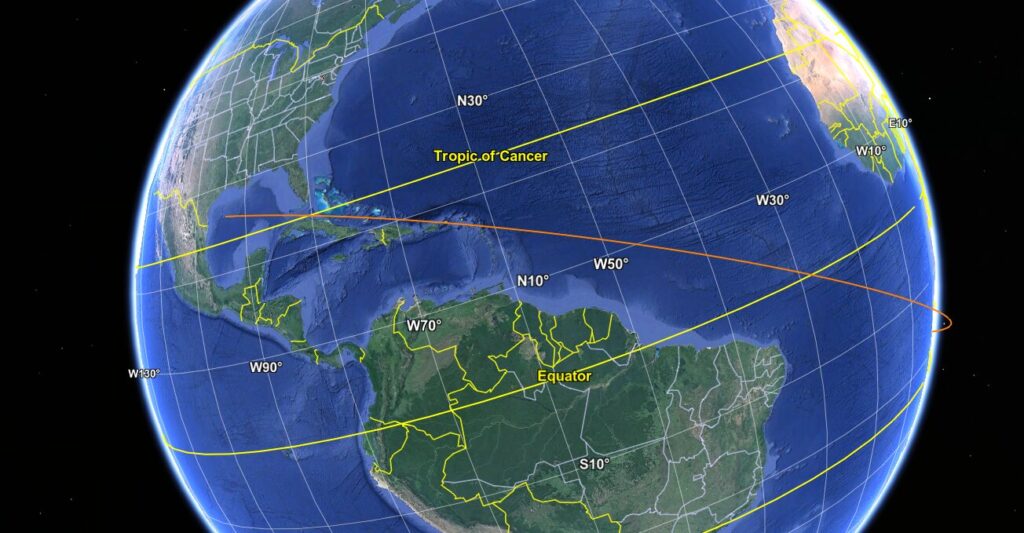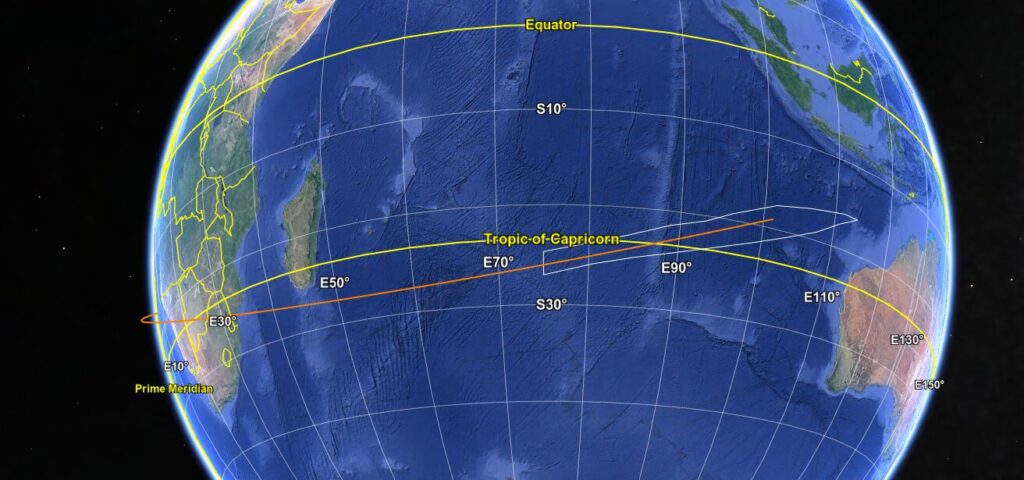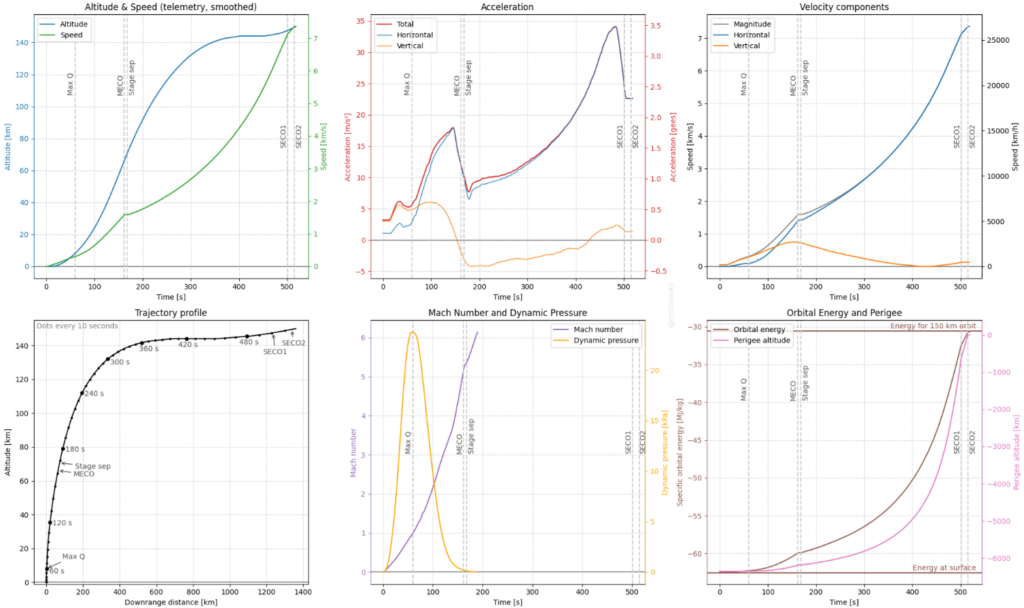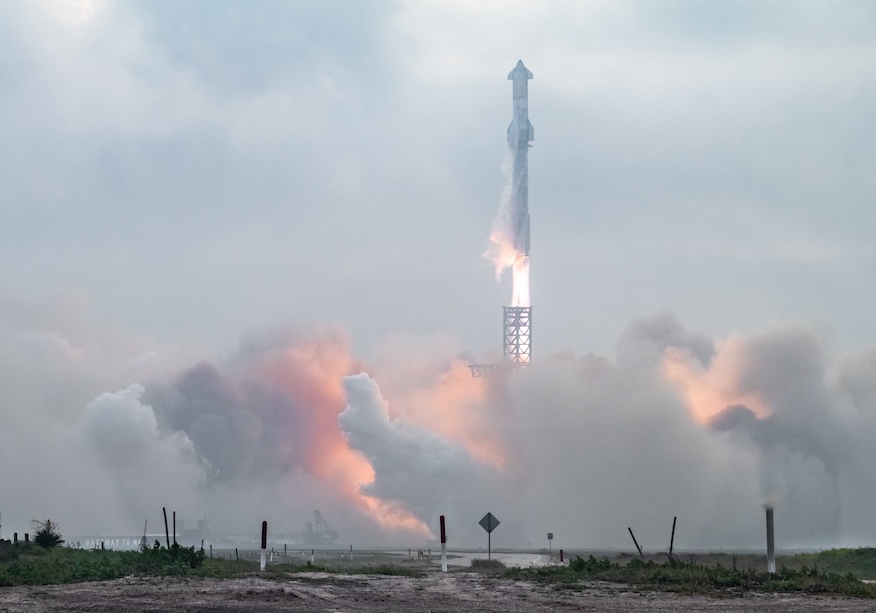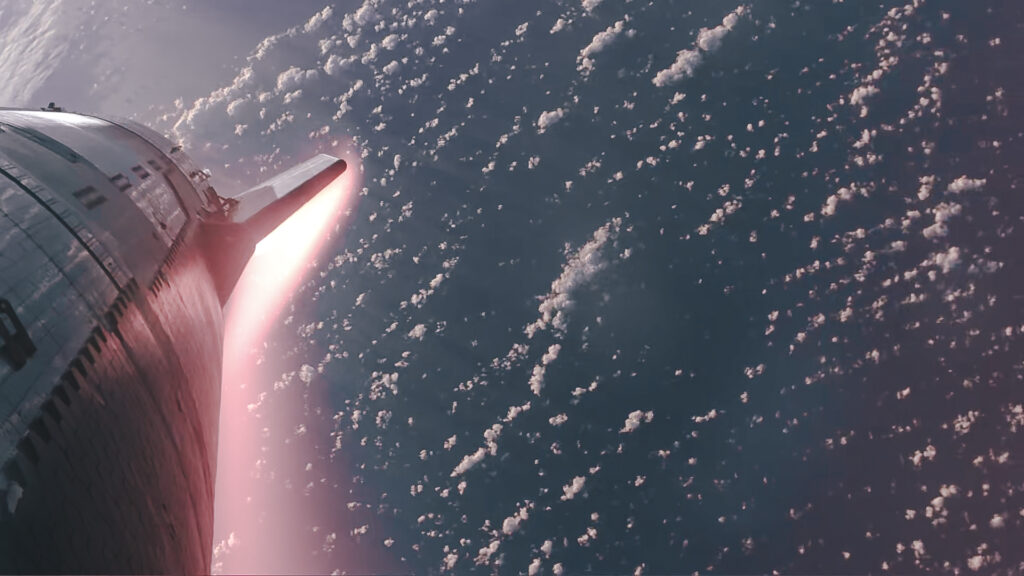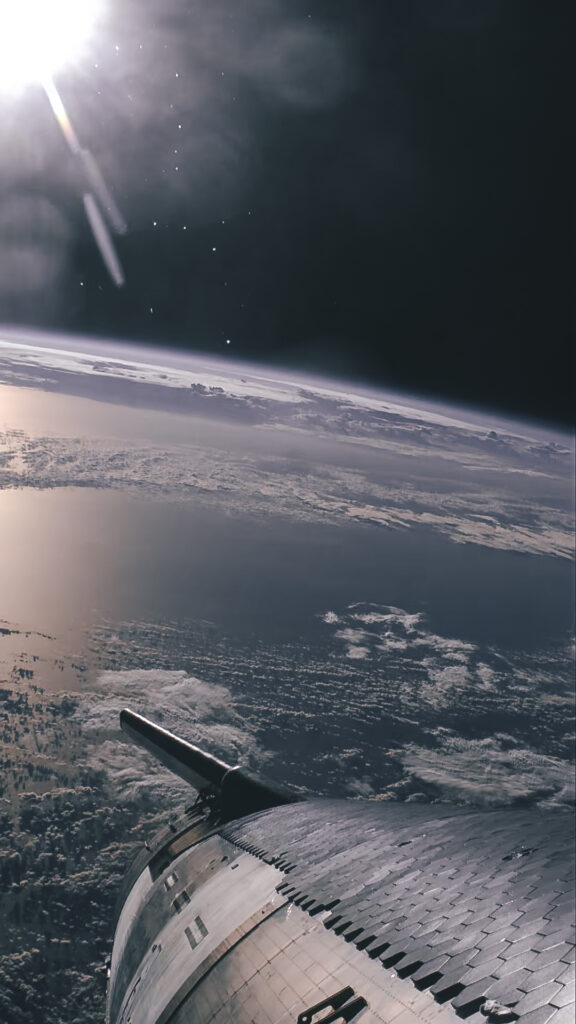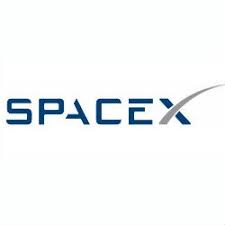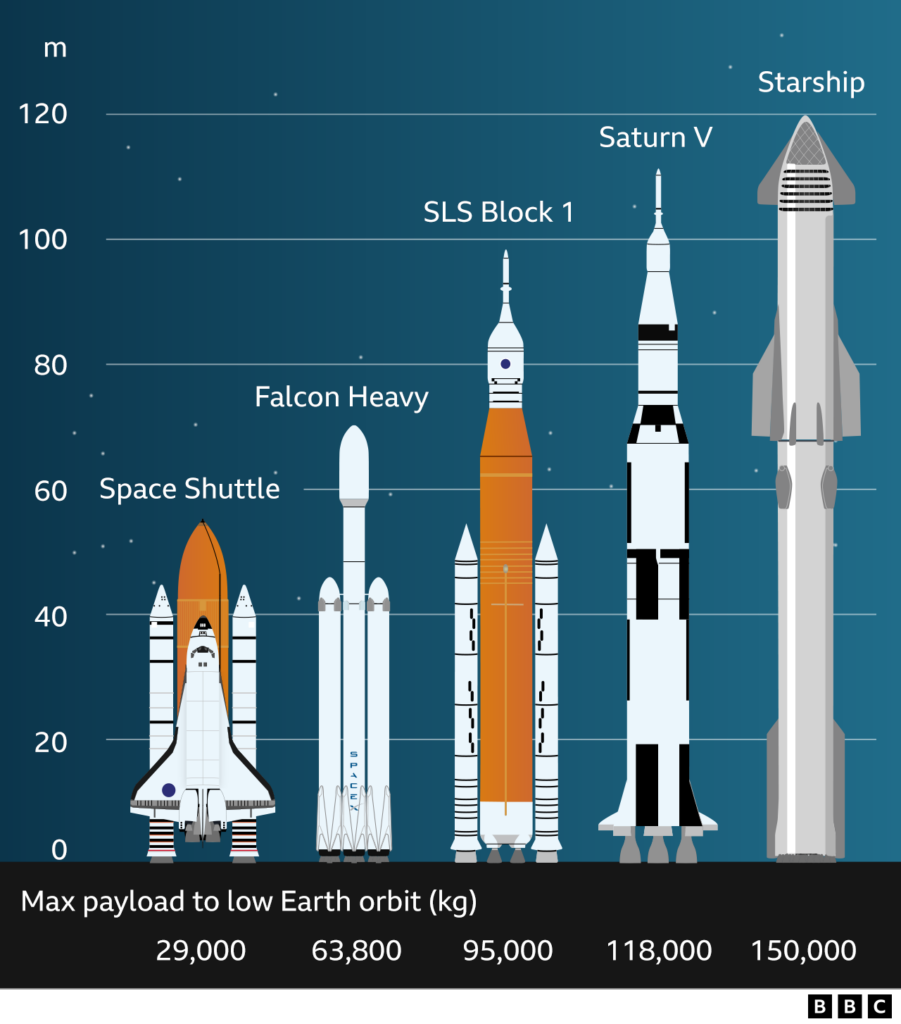SpaceX Starship I sequence of events (IFT-3)
SpaceX Starship III sequence of events (IFT-3)
Mission Flight test #III: B10/S28 (IFT-3, Starship Flight 3)
Starship progress
Previous Starship missions
Mission IFT-3
- The third flight test of a fully integrated Starship.
- Integrated Test Flight IFT-3 (OFT-3).
- Expected: March 2024.
- Launch date: 14-03-2024 (NET).
Scheduled IFT-3
- 14-03-2024 launch (NET).
Updates IFT-3
- Electronic Thrust Vector Control (TVC): An advanced system for precise control of the rocket’s path
- Upgraded Flight Termination System (FTS): Enhanced safety measures for mission termination if necessary.
- Propellant Transfer Demonstration: A key feature for the HLS, involving transfer from a header tank to a main tank in microgravity.
- Launch Pad Improvements. Addition of a water-cooled steel plate for thermal protection and sound dampening. Improvements to the OLM, Orbital Launch Module, and “Mechazzilla,” the chopstick arms used to stack Starship on the Booster.
Flight objectives IFT-3
- Ascent burn of both stages. Controlled ascent.
- Opening and closing Starship’s payload door.
- Propellant transfer demonstration during the upper stage’s coast phase.
- Orbital insertion.
- Controlled reentry of Starship.
- New trajectory, with Starship targeted to splashdown in the Indian Ocean. This new flight path enables the team to attempt new techniques like in-space engine burns while maximizing public safety.
- First re-light of a Raptor engine while in space.
Configuration IFT-3
- Super Heavy 10, Booster 10 (B10).
- Starship SN28 (S28).
Launch location IFT-3
Launch preparations IFT-3
Booster
- 00-00-0000 Spin Prime Test (SPTB) Booster. Not performed.
- 00-00-0000 Static Fire (SFB) Booster. All engines.
- 00-00-0000 Flight Termination System (FTS) installed on Booster.
- 00-00-0000 Testing grid fins Booster.
Starship
- 16-12-2023 Spin Prime Test 1 (SPTS-1) Starship. 6 engines
- 00-00-0000 Spin Prime Test 2 (SPTS-2) Starship. After engine replacement with 2 or 3 engines.
- 00-00-0000 Static Fire (SFS-1) Starship. 6 engines.
- 00-00-0000 Static Fire (SFS-2) Starship. 1 engine.
- 08-03-2024 Flight Termination System (FTS) explosives installed on Starship.
Full-stack
- 14-02-2024 WDRFS. Aborted 1.
- 16-02-2024 WDRFS. Aborted 2.
- 03-03-2024 Wet Dress Rehearsal (WDRFS) full-stack (B10 and S28).
- 10-03-2024 B10 and S28 re-stacked (NET -93:00:00 or 10:00:00 am CDT).
- 10-03-2024 Ship Quick Disconnect (SQD) attached to S28.
- 10-03-2024 Full duration test of flame deflector.
License
- 00-00-0000 Fish and Wildlife Service (FWS) License issued.
- 00-00-0000 FAA Launch Site Safety Assessment (LSSA).
- 00-00-0000 FAA Launch Readiness Assessment (LRA).
- 13-03-2024 FAA Launch License issued.
Schedule
- 14-03-2024 Launch window 1.
Administration for Launch window 1
- 26-02-2024 FAA statement Closure of mishap investigation Starship Super Heavy Orbital Test Flight 2 (OFT-2) on 18-11-2023. FAA accepted 17 corrective actions.
- 05-03-2024 Spacex announced livestream 14-03-2024 for 0700 am local.
- 06-03-2024 SpaceX announced targeting 14-03-2024 (NET). Pending regulatory approval.
- 07-03-2024 Road closures posted for flight activities. Boca Chica Beach and State HWY 4 (Starbase) issued for:
- 11-03-2024 8 am to 9 pm CST
- 14-03-2024 12 am to 2 pm CST
- 15-03-2024 12 am to 2 pm CST
- 16-03-2024 12 am to 2 pm CST
- 07-03-2024 NOTAM USA (launch).
- 07-03-2024 NOTAM Mexico (launch).
- 07-03-2024 NOTAM Madagascar (succesful Raptor restart).
- 07-03-2024 NOTAM Mauritius (succesful Raptor restart).
- 07-03-2024 NOTAM Australia (unsuccesful Raptor restart).
- 10-03-2024 Full speed retraction test on SQD followed by reconnect.
- 11-03-2024 USA notice Marine hazard issued for 14-03-2024.
- 11-03-2024 Possible weather related details
Timezones 14-03-2024 IFT-3
- Time, clock, zones
- CDT = CST
- + 1 hour
- EDT = EST
- +4 hours
- UTC = GMT = Zulu
- +1 hour
- CET (wintertime)
Launch windows Boca Chica IFT-3
- Launch window 1 14-03-2024: Open 12:00 Zulu, Closed 14:31 Zulu. (Th)
- Launch window 2 15-03-2024: Open 12:00 Zulu, Closed 14:31 Zulu. (Fr)
- Launch window 3 16-03-2024: Open 12:00 Zulu, Closed 13:01 Zulu. (Sa)
- Launch window 4 17-03-2024: Open 12:00 Zulu, Closed 13:01 Zulu. (Su)
- Launch window 5 18-03-2024: Open 12:00 Zulu, Closed 14:31 Zulu. (Mo)
Launch window 1 details IFT-3
| Timezone | Go for propellant load (75 mins to Open) | Coverage (30 mins to Open) | Window Open | Window Closed |
|---|---|---|---|---|
CDT = CST | 5.45 am | 6.30 am | 7.00 am | 9.31 am |
EDT = EST | 6.45 am | 7.30 am | 8.00 am | 10.31 am |
| UTC = GMT = Zulu | 10:45 | 11:30 | 12:00 | 14:31 |
CET (winter) | 11:45 | 12:30 | 13:00 | 15:31 |
Weather forecast IFT-3
- Boca Chica:
- Brownsville
- Forecast
- 13-03-2024 for Window 1 (14-03-2024): Marginal (wind profile and clouds).
- 13-03-2024 for Window 2 (15-03-2024): Preferable.
- T-01:45:00 Final Weather Go/NoGo
- Gulf of Mexico: Radar
- East Indian Ocean: Indian Ocean
- Pacific Ocean (not for IFT-3): Pacific Ocean
- USA: Map
Targeted launch time IFT-3
- 07.30 am CST Weather 70% favorable. + 00:32:00.
- 08.02 am CST Marine fog wil not clear, multible balloons in the air, in upper levelsincrease of windshear. +00:08:00.
- 08.10 am CST Eight more minutes for leaving of boats. Weather is getting better. +00:15:00.
- 08.25 am CST Go for propellant load. 30 min margin left.
T-Time
*** Beyond this point all times are indicated in T-Time: ***
- T+ (countdown clock)
- T-0 (T-zero, launch, start mission clock)
- T- (mission clock)
T-07:00:00 IFT-3
- T-07:00:00 Start countdown clock.
- T-07:00:00 Road closure window opens (evacuation zone).
- T-04:00:00 Tank farm chilldown. Pope stick vent.
- T-04:00:00 Chopsticks opened.
- T-03:00:00 Pad clear.
- T-02:20:00 OLM vent starts.
- T-02:10:00 First tower vent.
- T-02:00:00 Range is Go.
- T-02:00:00 Vehicle is Go.
- T-02:00:00 Payload is Go.
T-01:45:00 IFT-3
Weather
- T-01:45:00 Weather (ongoing).
- T-01:45:00 Weather is Go.
- T-00:18:47 Wind 33 km/h.
T-01:30:00 IFT-3
Propellant loading
- T-00:53:00 until T-00:02:50
- Expected speed propellant load:
- Density liquid Methane: 0.422 kg/L (upper tanks).
- Density liquid Oxygen: 1.141 kg/L (lower tanks).
- Total: 4,600 t (4,600,000 kg).
- 115 t/min (1,92 t/sec).
- Loading in 40 min.
T-01:15:00 until T-00:00:00 IFT-3
| hh:mm:ss | Event |
|---|---|
| T-01:15:00 | SpaceX Flight Director conducts poll and verifies GO for propellant load |
| T-00:53:00 | Ship LOX (liquid oxygen) load underway Actual: T-00:50:00 Tower venting stopped. Actual: T-00:50:00 Start propellant load (confirmed). |
| T-00:51:00 | Ship fuel (liquid methane) load underway Actual: T-0043:00 First frost ring. |
| T-00:42:00 | Booster LOX load underway |
| T-00:41:00 T-00:30:00 | Booster fuel load underway Start SpaceX coverage (new tab) |
| T-00:19:40 | Raptor begins engine chill on booster and ship |
| T-00:03:30 | Booster propellant load complete |
| T-00:02:50 | Ship propellant load complete |
| T-00:00:30 | SpaceX flight director verifies GO for launch Actual: T-00:00:40 hold not needed. Actual: On time |
| T-00:00:10 | Flame deflector activation (water deluge) |
| T-00:00:03 | Raptor ignition sequence begins |
| T-00:00:00 | Engines start (start mission clock) |
Trajectory planned (scheme) IFT-3
Trajectory planned globe (scheme) IFT-3
T+00:00:02 IFT-3
| hh:mm:ss | Event |
|---|---|
| T+00:00:02 | Liftoff |
| T+00:00:52 | Max Q (moment of peak mechanical stress on the rocket) |
| T+00:02:42 | Booster MECO (most engines cut off) |
| T+00:02:44 | Hot-staging (Starship Raptor ignition and stage separation) |
| T+00:02:55 | Booster boostback burn startup |
| T+00:03:50 | Booster boostback burn shutdown |
| T+00:06:36 | Booster is transonic |
| T+00:06:46 | Booster landing burn startup |
| T+00:07:04 | Booster landing burn shutdown |
| T+00:08:35 | Starship engine cutoff |
| T+00:11:56 | Payload door open Actual T+0011:53 Acquisition of signal from Puero Rico. Actual T+00:13:00 Speed 26327 km/h, altitude 188 km (coastal phase). |
| T+00:24:31 | Propellant transfer demo |
| T+00:28:21 | Payload door close |
| T+00:40:46 | Raptor in-space relight demo Actual T+00:40:00 Raptor in-space relight demo skipped (no de-orbit burn). Actual T+00:43:00 Video from a flap (tiles getting off?). 18.000 tiles. |
| T+00:49:05 | Starship entry Actual T+00:52:00 Speed 25707 km/h, altitude 65 km. No updates. Starlink lost, no data, shipped lost on re-entry. Highest teentry speed for SpaceX. |
| T+01:02:16 | Starship is transonic |
| T+01:03:04 | Starship is subsonic Actual T+01:03:50 Starship lost. |
| T+01:04:39 | Landing Actual No soft landing by Booster or Starship. |
Live streams IFT-3
Telemetry first 10 minutes (actual trajectory profile) IFT-3
| Time | Booster | Booster | Booster | Starship | Starship | Starship | Remarks |
| engines | Speed | Altitude | Speed | Altitude | engines | ||
| running | (km/h) | (km) | (km/h) | (km) | running | ||
| T+00:00:00 | 0 | 0 | 0 | 0 | 0 | 0 | |
| T+00:00:30 | 33 | 504 | 1 | 504 | 1 | 0 | |
| T+00:01:00 | 33 | 1100 | 8 | 1100 | 8 | 0 | |
| T+00:01:30 | 33 | 1915 | 19 | 1915 | 19 | 0 | |
| T+00:02:00 | 33 | 3324 | 36 | 3324 | 36 | 0 | |
| T+00:02:30 | 33 | 5001 | 57 | 5001 | 57 | 0 | T+00:02:49 Hot staging |
| T+00:03:00 | 13 | 5398 | 80 | 5906 | 79 | 6 | |
| T+00:03:30 | 13 | 2140 | 97 | 6598 | 97 | 6 | T+00:03:40 Boostback burn |
| T+00:04:00 | 0 | 565 | 105 | 7456 | 112 | 6 | |
| T+00:04:30 | 0 | 635 | 105 | 8473 | 124 | 6 | |
| T+00:05:00 | 0 | 1594 | 96 | 9643 | 132 | 6 | |
| T+00:05:30 | 0 | 2608 | 79 | 11023 | 138 | 6 | |
| T+00:06:00 | 0 | 3634 | 53 | 12637 | 142 | 6 | |
| T+00:06:30 | 0 | 4214 | 19 | 14549 | 143 | 6 | Landing burn, 1 engine (462 km) |
| T+00:07:00 | 1 | 1111 | 0 | 16825 | 144 | 6 | |
| T+00:07:30 | 19602 | 144 | 6 | ||||
| T+00:08:00 | 23142 | 145 | 6 | ||||
| T+00:08:30 | 26189 | 149 | 3 | T+00:08:23 3 engines shutoff | |||
| T+00:09:00 | 26473 | 153 | 0 | ||||
| T+00:09:30 | 26454 | 158 | 0 | Coastal phase | |||
| T+00:10:00 | 26436 | 162 | 0 |
IFT-3 Altitude & Speed (telemetry, smoothed), Acceleration, Velocity components, Trajectory profile, Mach number and Dynamic Pressure, Orbital Energy and Perigee graphs.
Photography IFT-3
Telemetry last 10 minutes (actual trajectory profile) IFT-3
| Time | Booster | Booster | Booster | Starship | Starship | Starship | Remarks |
| engines | Speed | Altitude | Speed | Altitude | engines | ||
| running | (km/h) | (km) | (km/h) | (km) | running | ||
| T+00:41:00 | 26482 | 153 | 0 | ||||
| T+00:41:30 | 26504 | 148 | 0 | ||||
| T+00:42:00 | 26526 | 143 | 0 | ||||
| T+00:42:30 | 26548 | 138 | 0 | ||||
| T+00:43:00 | 26571 | 134 | 0 | ||||
| T+00:43:30 | 26593 | 129 | 0 | ||||
| T+00:44:00 | 26615 | 124 | 0 | ||||
| T+00:44:30 | 26639 | 119 | 0 | T+00:44:39 What fell off? | |||
| T+00:45:00 | 26660 | 114 | 0 | ||||
| T+00:45:30 | 26685 | 108 | 0 | ||||
| T+00:46:00 | 26707 | 103 | 0 | ||||
| T+00:46:30 | 26730 | 98 | 0 | T+00:46:17 Plasma appears | |||
| T+00:47:00 | 26743 | 93 | 0 | Plasma | |||
| T+00:47:30 | 26754 | 88 | 0 | Plasma, speed increases | |||
| T+00:48:00 | 26750 | 82 | 0 | Plasma | |||
| T+00:48:30 | 26673 | 78 | 0 | Plasma | |||
| T+00:49:00 | 26528 | 73 | 0 | Ended at T+0049:00 | |||
| T+00:49:30 | 26142 | 67 | 0 | Last signal T+00:49:40 (25724/65) | |||
| T+00:50:00 |
Evaluation IFT-3
Full stack positive
- As a result of investments in the capacity of the tank farm, fuel loading took place with a greater volume per minute than with IFT-1 and IFT-2 and was completed in a shorter time (as tested and planned). From GO for propellant load to Engine start was 02:00:00 and is now 01:15:00.
- On time.
- Launch window 1 used.
Full stack negative
- None.
Booster positive
- For the second time, all 33 Raptor engines on the Super Heavy Booster started up successfully and completed a full-duration burn during ascent.
- Following separation, the Super Heavy booster successfully completed its flip maneuver and completed a full boostback burn to send it towards its splashdown point in the Gulf of Mexico.
Booster negative
- Super Heavy successfully lit several engines for its first ever landing burn before the vehicle experienced a RUD (that’s SpaceX-speak for “rapid unscheduled disassembly”). The booster’s flight concluded at approximately 462 meters in altitude and just under seven minutes into the mission.
- Did not light all the expected engines for the landing burn.
- No soft landing.
Starship positive
- Starship executed its second successful hot-stage separation, powering down all but three of Super Heavy’s Raptor engines and successfully igniting the six second stage Raptor engines before separating the vehicles.
- Starship’s six second stage Raptor engines all started successfully and powered the vehicle to its expected orbit, becoming the first Starship to complete its full-duration ascent burn.
- While coasting, Starship accomplished several of the flight test’s additional objectives, including the opening and closing of its payload door (aka the pez dispenser,) and initiating a propellant transfer demonstration. Starship did not attempt its planned on-orbit relight of a single Raptor engine due to vehicle roll rates during coast. Results from these demonstrations will come after postflight data review is complete.
- Starship went on to experience its first ever entry from space, providing valuable data on heating and vehicle control during hypersonic reentry. Live views of entry were made possible by Starlink terminals operating on Starship.
Starship negative
- Raptor relight demo skipped.
- It appears that some tiles fell of from Starship during the reentry.
- No communication in the last phase of the flight.
- No soft landing.
- The flight test’s conclusion came during entry, with the last telemetry signals received via Starlink from Starship at approximately 49 minutes into the mission.
Next steps
Follow-up IFT-3
- Starship was spinning (around its longitudinal axis) because the aerodynamic flaps were not working properly.
- This made the fuel transfer test not possible.
- The uncontrolled spinning is also a problem for the reentry (plasma phase) because there are only heat-resistant tiles attached to one side of Starship.
- The tumbling made it impossible to perform the engine restart test.
- After the plasma phase there was no more contact with Starship,
- In the future, the FAA will provide 1 license for multiple launches.
- IFT-3 FAA mishap investigation.
- Rapid progress is needed for Starship, which is on the critical path for NASA’s Artemis 3 mission. Artemis 3 aims to land the first humans on the moon since the end of the Apollo era in the early 1970s. Artemis 3 is currently scheduled for 2026, giving Starship less than two years to meet NASA vehicle qualifications for landing astronauts on the lunar surface.
Next Starship missions
Footnotes
- Internal: SpaceX Starship IV sequence of events (IFT-4)
- Outgoing: Space.com
- Keywords: SpaceX Starship III sequence of events. IFT-3, test 3, TF3, SpaceX 3, SpaceX III, SpaceX-3, SpaceX3, OTF3, OTF-3.

